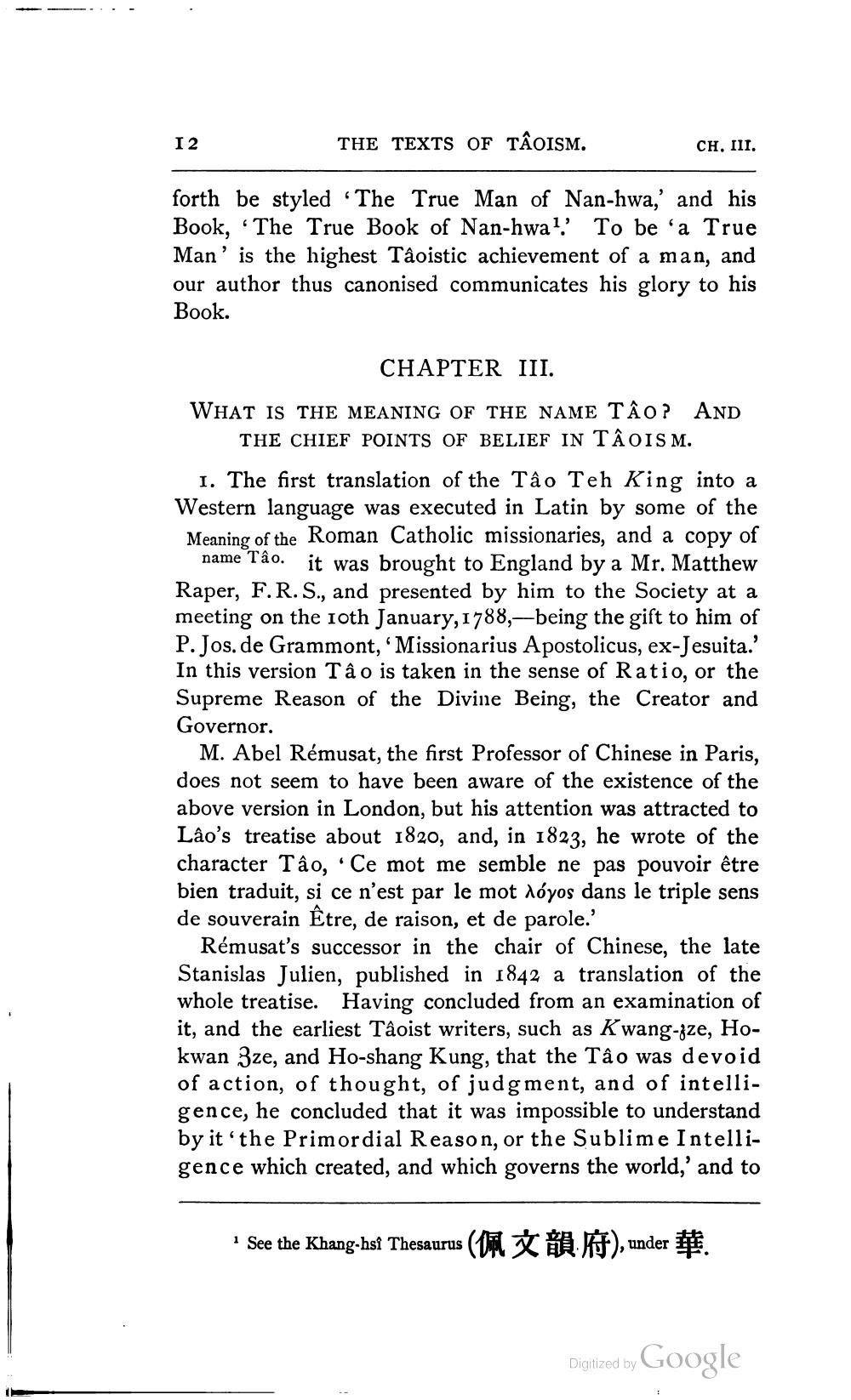________________
THE TEXTS OF TAOISM.
forth be styled 'The True Man of Nan-hwa,' and his Book, The True Book of Nan-hwa1. To be 'a True Man is the highest Tâoistic achievement of a man, and our author thus canonised communicates his glory to his Book.
I 2
CH. III.
CHAPTER III.
WHAT IS THE MEANING OF THE NAME TAO? AND THE CHIEF POINTS OF BELIEF IN TAOISM.
name Tâo.
1. The first translation of the Tâo Teh King into a Western language was executed in Latin by some of the Meaning of the Roman Catholic missionaries, and a copy of it was brought to England by a Mr. Matthew Raper, F. R. S., and presented by him to the Society at a meeting on the 10th January, 1788,-being the gift to him of P. Jos. de Grammont, 'Missionarius Apostolicus, ex-Jesuita.' In this version Tâo is taken in the sense of Ratio, or the Supreme Reason of the Divine Being, the Creator and Governor.
M. Abel Rémusat, the first Professor of Chinese in Paris, does not seem to have been aware of the existence of the above version in London, but his attention was attracted to Lâo's treatise about 1820, and, in 1823, he wrote of the character Tâo, Ce mot me semble ne pas pouvoir être bien traduit, si ce n'est par le mot λóyos dans le triple sens de souverain Être, de raison, et de parole.'
Rémusat's successor in the chair of Chinese, the late Stanislas Julien, published in 1842 a translation of the whole treatise. Having concluded from an examination of it, and the earliest Tâoist writers, such as Kwang-zze, Hokwan 3ze, and Ho-shang Kung, that the Tâo was devoid of action, of thought, of judgment, and of intelligence, he concluded that it was impossible to understand by it 'the Primordial Reason, or the Sublime Intelligence which created, and which governs the world,' and to
1 See the Khang-hsî Thesaurus (), under
Digitized by Google




